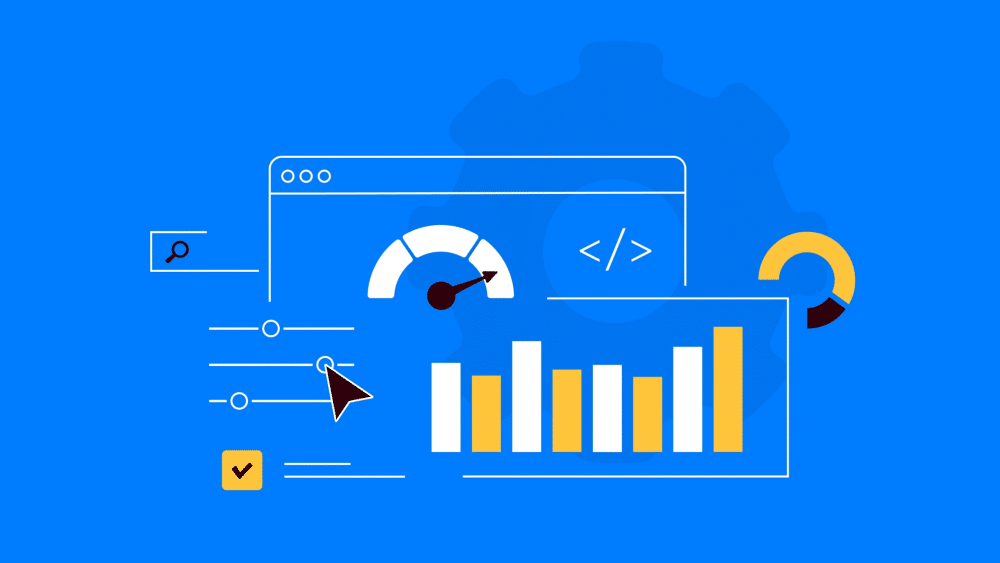A fast-loading website is crucial for better user experience, SEO rankings, and conversion rates. While plugins can simplify optimization, they may also introduce bloat. Here's how you can boost your website speed without relying on plugins:
1. Optimize Images
Images often account for the majority of a webpage’s size. Optimizing them ensures they load quickly without compromising visual quality.
1. Compress Images
- Tools like TinyPNG, ImageOptim, and Squoosh reduce file sizes by removing unnecessary metadata and using advanced compression techniques.
- Example: A 2MB PNG file can be reduced to 200KB or less using compression.
- Is your site optimized for mobile and SEO?
With clear objectives, your redesign will be a well-informed leap forward rather than a risky gamble.
2. Choose the Right Format
Before diving into the redesign process, establish clear goals. Ask the right questions:
JPEG
Best for photos with lots of colors..
PNG
Use for images requiring transparency.
WebP
Offers better compression than JPEG/PNG while retaining quality.
3. Responsive Images
Serve different image sizes based on the user's screen resolution or viewport size using srcset
2. Use Lazy Loading
Lazy loading delays loading of images, videos, or iframes until they’re in the user’s viewport.
Why It Helps
- Reduces initial page load time.
- Decreases bandwidth usage for users who don’t scroll through the entire page.
Implementation
For images
<img decoding="async" src="data:image/svg+xml,%3Csvg%20xmlns='http://www.w3.org/2000/svg'%20viewBox='0%200%200%200'%3E%3C/svg%3E" alt="Description" data-lazy-src="example.jpg"><noscript><img decoding="async" src="example.jpg" loading="lazy" alt="Description"></noscript>
For videos
<iframe src="about:blank" loading="lazy" data-rocket-lazyload="fitvidscompatible" data-lazy-src="http://video.mp4"></iframe><noscript><iframe src="video.mp4" loading="lazy"></iframe></noscript>
Best Practice
Analyze competitor sites for navigation, content structure, and features. Note what resonates with their audience and innovate from there.
3. Minify CSS, JavaScript, and HTML
Minification removes unnecessary characters from code, reducing file sizes and improving load times.
Benefits
- Smaller file sizes lead to faster downloads.
- Cleaner code improves parsing efficiency.
Tools
- Minify CSS and UglifyJS for manual minification.
- Build tools like Webpack or Gulp automate this process.
4. Use a Content Delivery Network (CDN)
A CDN distributes your content across multiple servers globally, serving assets from the nearest server to the user.
Benefits
- Reduces latency.
- Handles traffic spikes efficiently.
Popular Providers
- Cloudflare: Free and easy to set up.
- AWS CloudFront: Scalable and customizable.
Implementation
- Update your DNS settings to point your domain to the CDN.
- Use the CDN-provided URLs for static assets.
5. Enable Browser Caching
Caching lets the browser store static files locally, reducing the need to download them again.
How It Works
For static assets like images, CSS, and JS, set expiration headers in your .htaccess file or server configuration.
6. Reduce HTTP Requests
Each file loaded (e.g., CSS, JS, images) creates an HTTP request, which can slow your site.
How to Reduce
- Combine Files: Merge CSS and JavaScript into fewer files.
- CSS Sprites: Combine multiple small images into a single file and use background-position to display portions of it.
- Remove Unused Assets: Audit your site for unused libraries, fonts, or styles.
7. Optimize Fonts
Fonts are often large files and can slow down a site.
Techniques
- Use system fonts to avoid downloading font files.
- Subset fonts to include only the characters you need (e.g., Latin characters only).
- Use modern formats like WOFF2 for better compression.
Example
Google Fonts:
<link href="https://fonts.googleapis.com/css2?family=Roboto:wght@400;700&display=swap" data-rocket-async="style" as="style" onload="this.onload=null;this.rel='stylesheet'" onerror="this.removeAttribute('data-rocket-async')" rel="preload">
8. Optimize Your Server
The performance of your server directly impacts load times.
Tips
- Upgrade hosting if you’re using shared hosting. Consider cloud hosting or dedicated servers.
- Enable server-side caching (e.g., Redis or Memcached).
- Use HTTP/2 for faster parallel loading of resources.
9. Monitor and Optimize Performance
Regularly analyze your website to identify bottlenecks.
Recommended Tools
- Google PageSpeed Insights: Provides detailed recommendations for optimization.
- GTmetrix: Offers a performance report, including waterfall charts.
Conclusion
Boosting your website speed without plugins is achievable through a combination of best practices and manual optimizations. By focusing on asset optimization, server performance, and efficient coding practices, you can create a faster and more user-friendly website that excels in both SEO and user satisfaction.

